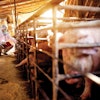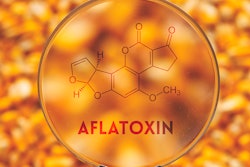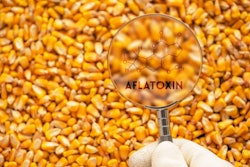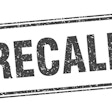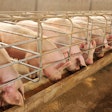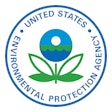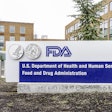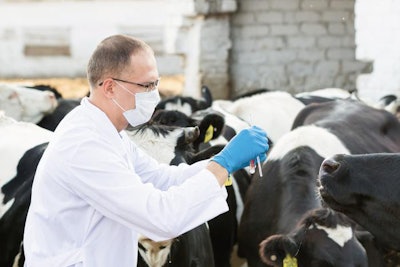
In Europe, less than one-fifth of 1% of samples of animals and their products contained higher-than-permitted residues of veterinary drugs and other contaminants in 2020, an improvement in compliance compared with the previous year.
Of more than 620,000 samples of animals and animal products surveyed in 2020, 0.19% exceeded the legal maximum levels of a range of contaminants, according to the European Food Safety Authority (EFSA). Sampling was carried out in all 27 members of the European Union (EU) in that year, as well as Iceland and Norway.
Results for 2020 represent an improvement on previous years. In the 2019 survey, 0.30% of samples were non-compliant. Indeed, the 2020 figure is the lowest percentage of non-compliance for 11 years. Over that period, the range was 0.25-0.37%.
As EFSA states, the presence of unauthorized substances, residues of veterinary medicines, or chemical contaminants in food represent a risk to public health. In the EU, legal frameworks set out the maximum residue limit (MRL) levels for veterinary medicinal products, pesticides and other potentially dangerous substances in food-producing animals and animal products. These also stipulate the frequency and level of sampling of live animals and their products.
Of all the samples monitored by EFSA, almost 332,000 were targeted samples, and 4,259 were suspect samples reported under EU legislation. Around 282,000 samples were collected through national food safety programs, and 2,551 samples were checked at import.
In 2020, 888 of the targeted samples were non-compliant, containing levels of one or more substances in excess of the corresponding MRL. This equates to 0.27% of all the samples in this category.
Anabolic agents and prohibited substances
For some substances in Group A, excessive levels were found, according to the EFSA report. This group includes substances with an anabolic effect, and unauthorized substances. For the anti-thyroid agents, 0.34% of samples were non-compliant — all for thiouracil linked to the consumption of brassicas and related plants.
For steroids, non-compliance was 0.11% in cattle, 0.10% in pigs, 0.62% in horses, and 4.23% in sheep and goats.
Just 0.04% of samples exceed the legal limit for the mycotoxin zearalenone — ranging from 0.01% in cattle to 1.55% in horses.
Within this group, only one sample contained a beta-agonist. This was from cattle, and contained salbutamol.
Finally for group A compounds, 11 tested positive for chloramphenicol, four for metronidazole, three for hydroxymetronidazol (MNZOH) and semicarbazide, and one for nitrofurazone.
Veterinary medicines
In the survey, Group B includes a wide range of substances including antibacterials (antibiotics), anticoccidials, mycotoxins and environmental contaminants, among others.
The EFSA report reveals that, for the antibacterials in this group (B1), non-compliance monitored in 2020 was 0.14%. Highest frequency was 0.57% among rabbit samples.
In the subgroup of other veterinary drugs (B2), the highest level of non-compliance was 0.23% for non-steroidal anti-inflammatory drugs (NSAIDs). Levels differed by species, and ranged from 0.01% in pigs to 1.17% in horses. For anthelmintics, excessive concentrations ranged from 0.02% in poultry and pigs to 0.23% in sheep and goats. Overall, the figure was 0.07%. No samples contained non-compliant concentrations of pyrethroids or sedatives, while 0.07% contained “other pharmacologically active substances.”
Contaminants from the environment
Finally, environmental contaminants and other substances are included in Group 3 of the EFSA survey.
Of this group, highest level of non-compliance — at 3.7% — was found for chemical elements. Most frequently detected were copper, cadmium, mercury and lead.
In 0.1% of the samples, organochlorine compounds were found, and organophosphorus compounds were detected in 0.01%.
For the mycotoxins, non-compliant concentrations were found in 0.21% of samples from pigs, and 0.26% of milk tested. Of the mycotoxins, most frequently detected were in zearalenone, aflatoxin M1 and ochratoxin A.
For dyes, 0.62% of aquaculture samples were non-compliant.
Among the “other substances” in Group 3, 0.11% of samples from pigs were non-compliant for fipronil.
Trends in EU compliance
In general, EFSA monitoring revealed similar patterns for the target samples as in previous years. Overall, non-compliance was 0.27% in 2020, which compares with levels of 0.30-0.33% in the past three years.
For some substance categories, there were improvements in compliance in comparison to 2019. Among other categories, this applied to steroids, chemical elements such as metals, anthelmintics, organochlorine compounds, and organophosphorus compounds.
In contrast, for mycotoxins and NSAIDs, the frequency of non-compliance was higher in 2020 than the previous year.
Meanwhile, no significant year-to-year variations were noted for antibacterial substances or anticoccidials.
The full report — titled “Report for 2020 on the results from the monitoring of veterinary medicinal product residues and other substances in live animals and animal products” — by Daniela Brocca and Stefania Salvatore of EFSA is published as an EFSA Supporting publication dated 2022.
